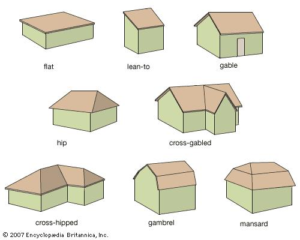- Base Sheet: an impregnated, saturated, or coated felt placed as the first ply in some multi-ply built up and modified bitumen roof membranes.
- Cap Sheet: a granule-surface coated sheet used as the top ply of some built-up or modified bitumen roof membranes and/or flashing.
- Caulking: (1) the physical process of sealing a joint or juncture; (2) sealing and making weather-tight the joints, seams, or voids between adjacent units by filling with a sealant.
- Coating: a layer of material spread over a surface for protection or decoration. Coatings for SPF are generally liquids, semi-liquids, or mastics; spray, roller, or brush applied; and cured to an elastomeric consistency.
- Counterflashing: formed metal sheeting secured on or into a wall, curb, pipe, rooftop unit, or other surface, to cover and protect the upper edge of the membrane base flashing or underlying metal flashing and associated fasteners from exposure to the weather.
- Cricket: an elevated roof substrate or structure, constructed to divert water around a chimney, curb, away from a wall, expansion joint, or other projection/penetration. (See Saddle.)
- Dormer: a framed projection through the sloping plane of a roof.
- Drip Edge: a metal flashing, or other overhanging component, with an outward projecting lower edge, intended to control the direction of dripping water and help protect underlying building components. A drip edge also can be used to break the continuity of contact between the roof perimeter and wall components to help prevent capillary action.
- Eave: a projecting edge of a roof that extends beyond the supporting wall.
- Fascia: a vertical or steeply sloped roof or trim located at the perimeter of a building. Typically, it is a border for the low-slope roof system that waterproofs the interior portions of the building.
- Felt: a flexible sheet manufactured by the interlocking of fibers through a combination of mechanical work, moisture, and heat. Roofing felts may be manufactured principally from wood pulp and vegetable fibers (organic felts), asbestos fibers (asbestos felts), glass fibers (fiberglass felts or ply sheet), or polyester fibers.
- Flashing: components used to weatherproof or seal the roof system edges at perimeters, penetrations, walls, expansion joints, valley, drains, and other places where the roof covering is interrupted or terminated. For example, membrane base flashing covers the edge of the field membrane, and cap flashings or counterflashings shield the upper edges of the base flashing.
- Gable: a triangular portion of the endwall of a building directly under the sloping roof and above the eave line.
- Galvalume ®: trade name for a coating, used over metal, that is composed of aluminum zinc for corrosion protection.
- Galvanize: to coat with zinc.
- Hip: the inclined external angle formed by the intersection of two sloping roof planes.
- Joist: any of the small timbers, metal or wood beams arranged parallel from wall to wall to support a floor, ceiling, or roof of a building.
- Mansard: a decorative steep-sloped roof on the perimeter of a building.
- Neoprene: a synthetic rubber (polychloroprene) used in liquid-applied and sheet-applied elastomeric roof membranes or flashings.
- Ponding: the excessive accumulation of water at low-lying areas on a roof.
- Rafter: one of a series of sloped structural members, that extend from the ridge or hip to the downslope perimeter or eave, designed to support the roof deck and its associated loads.
- Rake: the sloped edge of a roof at or adjacent to the first or last rafter.
- Ridge: highest point on the roof, represented by a horizontal line where two roof areas intersect, running the length of the area.
- Ridge Vent: a ventilator located at the ridge that allows the escape of warm and/or moist air from the attic area or rafter cavity. Most ridge vents are either premanufactured metal or flexible, shingle-over type.
- Roll Roofing: smooth-surfaced or mineral-surfaced, coated, prepared felts.
- Self-Adhering Membrane: a membrane that can adhere to a substrate and to itself at overlaps without the use of an additional adhesive. The undersurface of a self-adhering membrane is protected by a release paper or film, which prevents the membrane from bonding to itself during shipping and handling.
- Shingle: (1) individual unit of prepared roofing material designed for installation with similar units in overlap-ping rows or courses on inclines normally exceeding 3:12 slope (25%); (2) to cover with shingles; (3) to apply any roofing material in succeeding overlapping rows or courses similar to shingles.
- Standing Seam: a metal roof system that consists of an overlapping or interlocking seam that occurs at an upturned rib. The standing seam may be made by turning up the edges of two adjacent metal panels and overlapping them, then folding or interlocking them in a variety of ways.
- Underlayment: an asphalt-saturated felt or other sheet material (may be self-adhering) installed between the roof deck and the roof system, usually used in a steep-slope roof construction. Underlayment is primarily used to separate the roof covering from the roof deck, to shed water, and to provide secondary weather protection for the roof area of the building.
- Valley: the internal angle formed by the intersection of two sloping roof planes.

